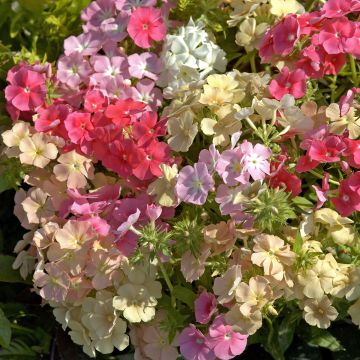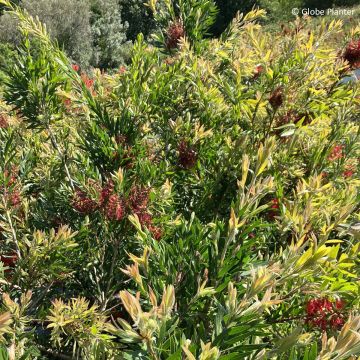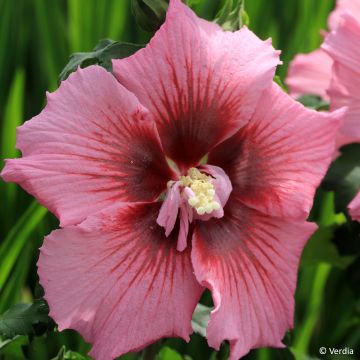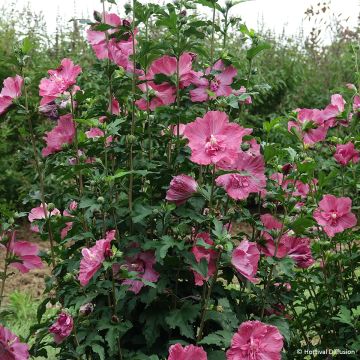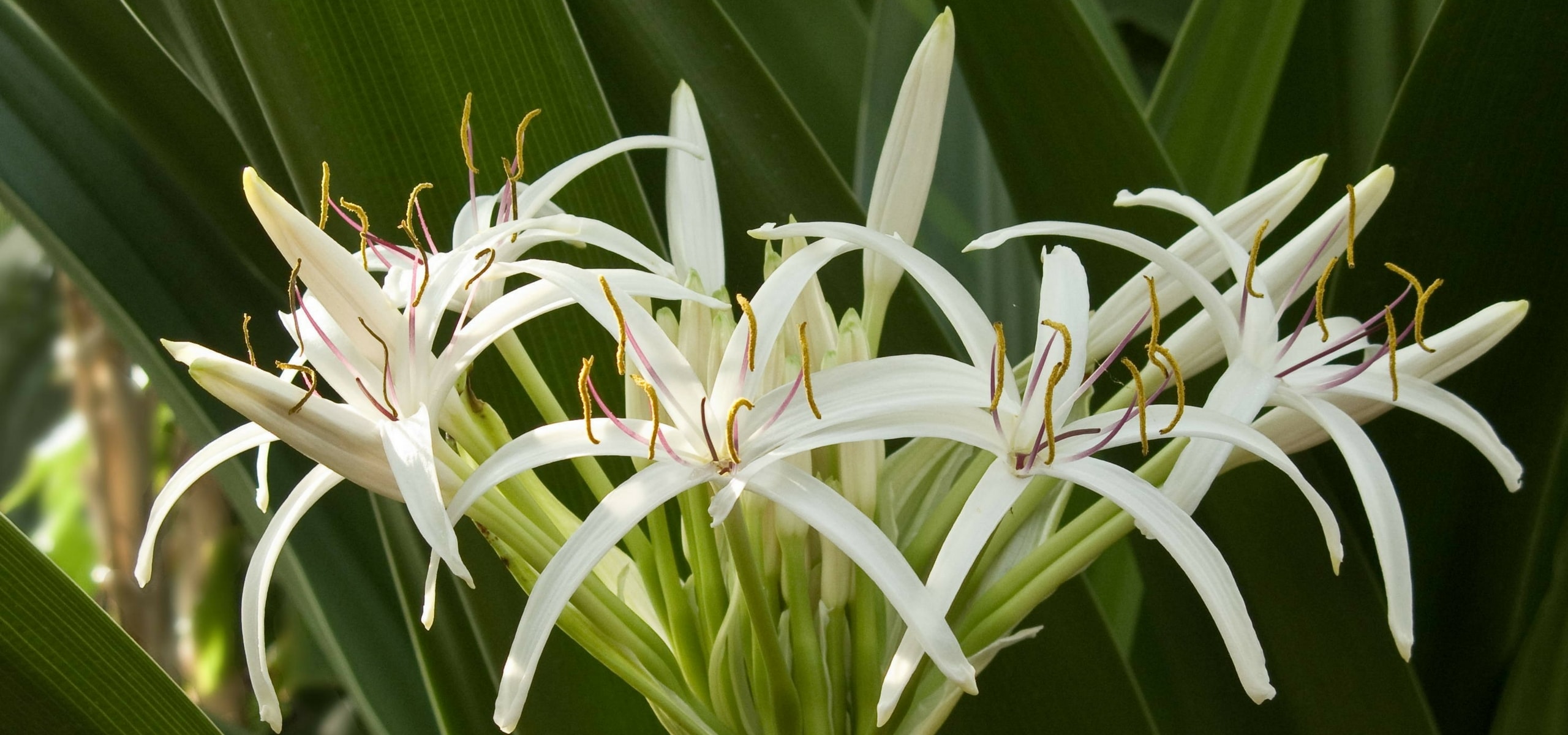
Planting rare and hardy bulbs
in the ground or in a pot
Contents
Rare bulbs are not necessarily the most difficult to grow! Little known and rarely found in gardens, these bulbs bring a lot of originality and spark curiosity with their intriguing shapes or vibrant colours. Contrary to what one might think, they do not always require complex care. While many thrive better in pots, especially to protect them from frost, some rare bulbs are surprisingly hardy and perfectly suited for cultivation in open ground.
In this article, discover how to choose, plant, and care for these true botanical treasures. Our tips will help you succeed in their cultivation, whether you plant them in open ground or in pots.
What are the rare and hardy bulbs?
Rare and hardy bulbs bring a touch of originality to the garden while adapting to various climates. Among them, we find the surprising Arisaema, with its cobra-shaped flowers, the Galtonia viridiflora (-10°C), with pale green bells, and the Eucomis, or “pineapple plants”, which add a touch of exoticism. Let’s not forget the majestic Cardiocrinum giganteum (down to -15°C), or Giant Himalayan Lily, which impresses with its height and fragrant white flowers, while the Lycoris aurea and Lycoris radiata (down to -8°C), with their bright red or golden tones, add an Asian note. We can also add to this list some uncommon orchids such as Cypripedium, Bletilla, Habenaria radiata, Calanthes, and Pleiones.
As for Amarcrinums, Sprekelia formosissima and Scadoxus multiflorus, these bulbs are a bit more tender (hardy down to about -4°C in well-drained soil). They can only be grown in the ground in regions spared from frost, such as the Mediterranean coast or the most sheltered areas of the Atlantic coastline.
Discover our advice sheet “7 rare and original bulbs” as well as our entire range of rare bulbs.
Read also
How to protect bulbs from rodents?Why cultivate them?
Growing rare and hardy bulbs invites originality and diversity into your garden. These plants are typically distinguished by their spectacular or unusual flowerings, which spark curiosity. They attract attention and are sure to surprise your friends when you take them on a tour of your garden! Some, like Lycoris or Eucomis, offer flowers with a very exotic style. Their rarity makes them true treasures for botany enthusiasts, while their hardiness allows them to be planted in most gardens without necessarily needing winter protection! The fact that they are rare does not necessarily mean they are difficult to grow. Finally, choosing rare and hardy bulbs also means participating in the preservation and promotion of less commonly cultivated species, contributing to biodiversity and the richness of gardens.
Discover other Exceptional flowering bulbs
View all →Available in 0 sizes
Available in 1 sizes
Available in 1 sizes
Available in 1 sizes
Available in 1 sizes
Available in 1 sizes
Available in 1 sizes
Available in 1 sizes
Available in 2 sizes
Available in 1 sizes
Where to plant rare and hardy bulbs?
Rare and hardy bulbs fit into many types of gardens, provided they are given a location suited to their specific needs. They generally appreciate well-drained soils to avoid excess moisture, especially in winter. Slightly raised areas or rockeries are perfect for many species sensitive to standing water.
For shade-loving plants, such as Arisaema or Cypripedium, favour beds sheltered from direct sunlight, under trees or at the edge of woodlands. In contrast, Lycoris or Eucomis thrive better in sunny areas, where their flowering will be highlighted.
Soil choice is essential: it must be rich in humus, light, and fresh with a tendency towards acidic or neutral. In summer, it should remain relatively cool, but never waterlogged, as these bulbs are particularly sensitive to excess water. If your soil is heavy or a bit too moist in winter, place your bulb directly on a draining layer of a few centimetres, ideally 5 cm of perlite, vermiculite, pumice, or gravel.
In pots or in the ground, these bulbs are also suitable for urban gardens or small spaces, offering flexibility in installation. Just ensure to adapt the substrate and planting depth for each species to maximise their growth and flowering.
Read also
Bulb sizes: how to choose?When to plant them?
The ideal time to plant rare and hardy bulbs mainly depends on their growth and flowering cycle. Generally, spring-flowering bulbs, such as Galtonia or certain Cypripedium, are planted in autumn, before the first frosts, to allow them to establish roots during winter.
Summer or autumn-flowering species, such as Lycoris or Eucomis, are typically planted in spring, once the risk of frost has passed. This ensures optimal growth conditions with milder temperatures.
For some terrestrial orchids, such as Pléione or Bletilla, early spring or late autumn may also be suitable, depending on the specific recommendations for each species. Be sure to adhere to these timings to ensure successful planting and spectacular flowering.
How to plant them?
In open ground:
- Using a dibber or a small spade, dig a hole 5 to 10 cm deep, depending on the size of the bulb,
- Optionally add drainage materials to the bottom of the hole, such as gravel, pumice, vermiculite, or perlite, to improve drainage.
- If your soil is too heavy or too poor, mix the removed soil with one third gravel, one third potting soil, and one third turf.
- Place the bulb in the planting hole, point upwards.
- Cover it with soil and then lightly firm it down.
- Water to help the bulb settle in.
In a pot:
- Choose a terracotta pot, wider than it is tall, to promote good drainage.
- Fill the pot with substrate, ideally a mix made up of half perlite or vermiculite and half leaf mould.
- Plant the bulbs about 5 cm deep, spacing them to prevent them from touching.
- All that’s left to do is water.
Ensure to keep the substrate slightly moist, but never waterlogged. In winter, place the pot in a frost-free location, in a cool and dry spot, and water very lightly (a few drops every 15 days). Resume watering in spring, as soon as the bulbs start to emerge.
How to care for them?
During the growth period, regular but moderate watering is essential to avoid both drying out and excess moisture, which could cause the bulbs to rot. Once flowering is finished, gradually reduce watering to allow the leaves to wither naturally, enabling the bulb to replenish its reserves.
We recommend adding a bit of compost or organic fertiliser each year at the beginning of spring. For species grown in pots, it is ideal to partially renew the substrate every two to three years to maintain its richness and structure.
In winter, protect frost-sensitive bulbs with a thick mulch, such as straw or fallen leaves. Some bulbs, like Lycoris or Pleione, require a dry resting period: limit watering during winter, gradually resuming in spring when new shoots appear.
Finally, regularly monitor your bulbs for any potential pests or diseases. Slugs, aphids, or rots can sometimes be problematic, especially in humid conditions. Appropriate vigilance and some preventive care will be sufficient to ensure the good health of your plants.
- Subscribe!
- Contents


































